#carl boese
Text

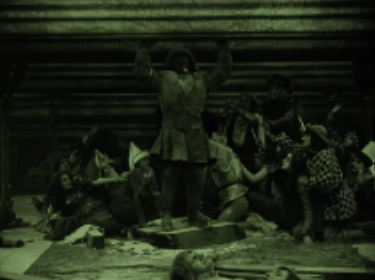

Paul Wegener in Der Golem, wie er in die Welt kam (1920)
#der golem wie er in die welt kam#the golem: how he came into the world#the golem#paul wegener#1920s horror#1920s movies#1920#carl boese#classic horror#silent film#horrorgifs#gif#my gifs
207 notes
·
View notes
Text

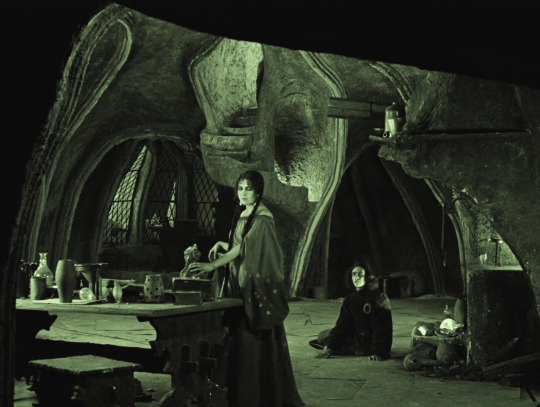




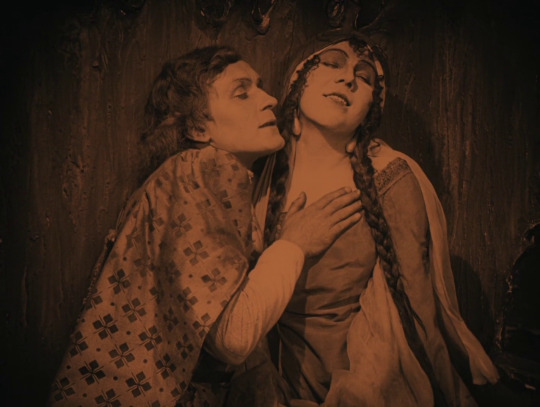
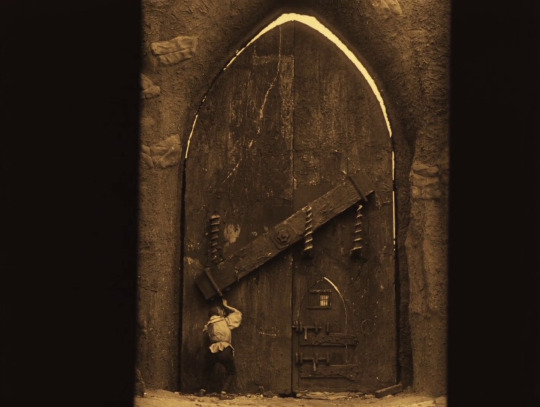





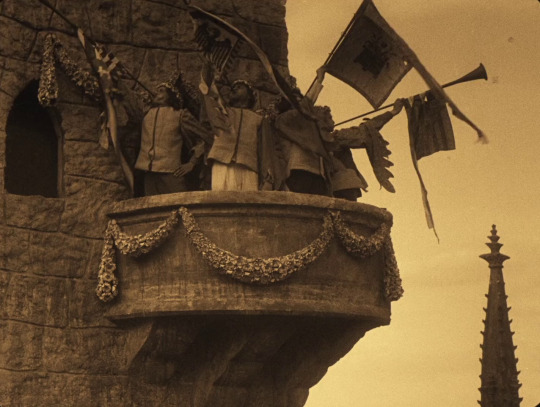




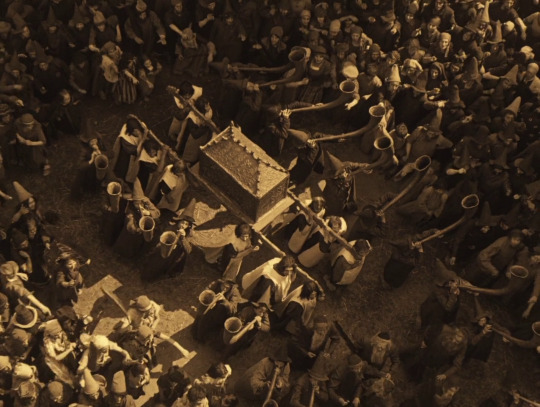

Der Golem (1920)
#der golem#the golem#silent film#horror#the golem how he came into the world#paul wegener#carl boese#movie screencaps#film screencaps#my screencaps
6 notes
·
View notes
Text
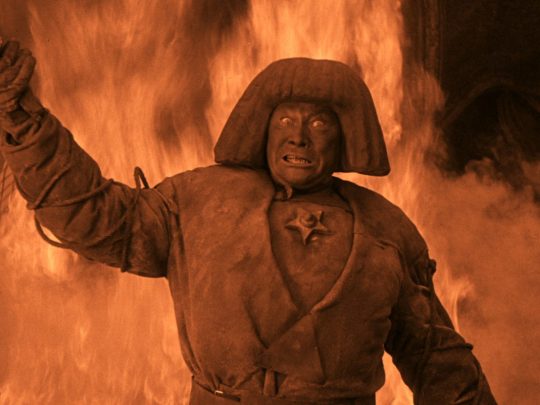
The Golem: How He Came into the World (1920, Paul Wegener/Carl Boese, Germany)
8 notes
·
View notes
Text



The Golem: How He Came Into the World (1920), dir. Carl Boese and Paul Wegener
#the frankenstein and blind man vibes!!!!!!!#the golem: how he came into the world#Der Golem wie er in die Welt kam#the golem how he came into the world#paul wegener#carl boese#german cinema#film stills#*
2 notes
·
View notes
Text
The Golem (1920)
#RHTCinema
#FullFilm The Golem
Plot – In 16th-century Prague, a rabbi creates the Golem – a giant creature made of clay. Using sorcery, he brings the creature to life in order to protect the Jews of Prague from persecution.
Director – Carl Boese, Paul Wegener
Starring – Paul Wegener, Albert Steinrück, Ernst Deutsch
Genre – Horror | Fantasy
Released – 1920

View On WordPress
#Albert Steinrück#black and white cinema#Carl Boese#Early Cinema#Ernst Deutsch#Fantasy#Film Reviews#Horror#Paul Wegener#The Golem
2 notes
·
View notes
Text
BLOGTOBER 10/6/2022 - GOLEMANIA! PT 1: DER GOLEM - HOW HE CAME INTO THE WORLD
For Blogtober 10/6 and 10/7, I examined two films about Jewish mysticism, both made by non-Jews, both long unavailable (or simply not available enough), and both fine examples of the style and visual capabilities of their times.
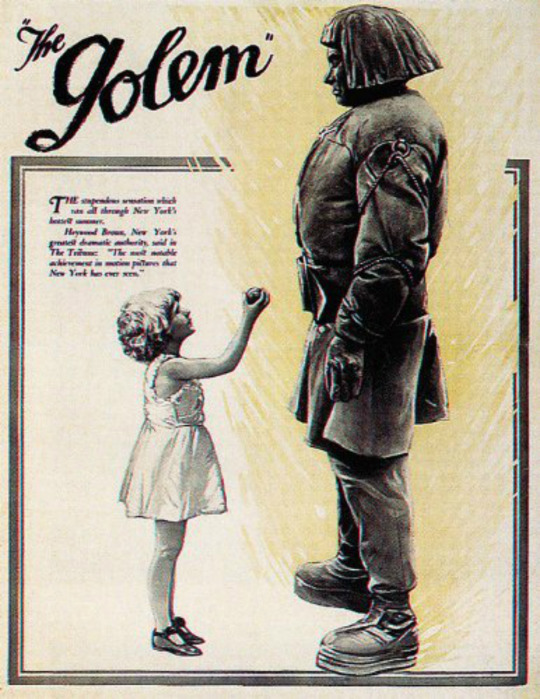
Though THE GOLEM: HOW HE CAME INTO THE WORLD represents an important beat in the development of German expressionist cinema, and any self-respecting nerd has seen plenty of beguiling stills from it, not as many people know it well enough to discuss it on the level that NOSFERATU or THE CABINET OF DR. CALIGARI enjoy. This is surely relatable to availability issues—in fact, the film is part of a trilogy, along with 1915's THE GOLEM and the 1917's THE GOLEM AND THE DANCING GIRL (apparently a primordial example of a horror-comedy!), but these other two are lost to time. The 1920 release, which I'll call DER GOLEM for convenience's sake, is the result of director and star Paul Wegener's desire to update his first effort, which was compromised by a number of disappointing production problems. So, it seems that if we can only have one of his Golem movies, it may as well be this one.
DER GOLEM is the collaboration of writer-director Wegener, his co-writer Henrik Galeen (see also: NOSFERATU), and his co-director Carl Boese, who I assume was especially necessary as Wegener himself plays the title role. The film is adapted from a novel by Austrian author Gustav Myer, which is further based on a Jewish folk tale, and it is interesting to see how this Germanic creative team express their impressions of the history of Jewish persecution. Some critics have found antisemitic underpinnings in the film, largely due to the (delightfully) frightening depiction of the esoteric practice that activates the Golem (which may have a deeper meaning than is immediately apparent), but that would be throwing the baby out with the bathwater. Despite the film being rather brief and broad, it is full of complex, sympathetic characters who transform significantly as the narrative unspools.
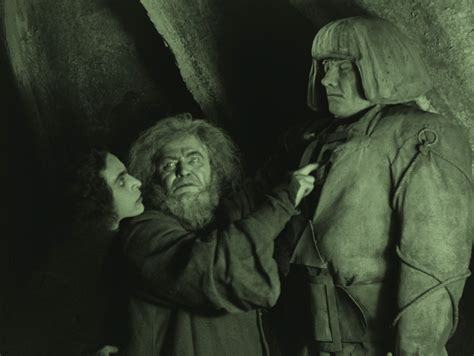
The story takes place in the Jewish ghetto of medieval Prague, where the venerable Rabbi Loew (Albert Steinrück) reads a warning in the stars predicting an imminent danger to his people. Sure enough, an edict comes down from the Holy Roman Emperor (Otto Gebühr) condemning the Jews for their evil character, and ordering their expulsion from the region. Loew creates a hulking clay protector who is brought to life by a sacred word hidden in a star-shaped talisman lodged in his chest, and thinks to impress and entertain the Emperor with his abilities in order to ameliorate the situation. The Golem makes a big splash in the Emperor's court, but the Rabbi's other demonstration doesn't go so well; he implores his audience not to laugh or speak during a magical cinematic projection of the history of the Jewish people, but they can't contain themselves, and the palace begins to crumble. When they are saved by the Golem, the Emperor gratefully rescinds his edict.
Now, this may be enormously crass of me, but I really, deeply think it would be incredibly great if Alamo Drafthouse made one of their pre-show warnings out of this scene. DON'T TALK. DON'T TEXT. OR THE GOLEM WON'T SAVE YOU FROM THE SUPERNATURAL DESTRUCTION OF YOUR EMPIRE.

The other thing I'd like to casually note about this first section, just because it's something I happen to know a little bit about, is that Rabbi Loew's invocation of the goetic demon Astaroth is not really equatable with the idea of devil worship that some viewers have extracted from this—which is fair, because this isn't easy to understand, nor is it readily accessible information. But (and I'm speaking very colloquially here) Astaroth is said to have mastery over esoteric knowledge, and one would work with him in order to gain more occult (for lack of a better word) enlightenment; so, it makes sense that he gives Rabbi Loew the sacred animating word. The other thing about working with demons is that they represent some set of what are usually considered to be negative characteristics: say, slander, wrath, vengeance, etc. So you might work with one of them to deflect these archetypal energies if they are directed at you by someone else. But, you'll also want to be prepared to address these elements in a mature and intelligent way, lest you be overtaken by them yourself. The final effect would be that you've learned an important lesson, and can't be harmed or dominated by whatever malefic characteristic you're dealing with.
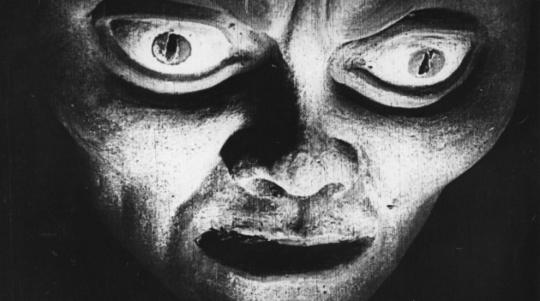
Once the Golem has served its purpose in averting the persecution of the Jews, Loew receives a warning that Astaroth may take it over and use it for vengeful violence. Loew wisely deactivates the creature, but while he goes out to join in communal celebrations, his Assistant makes a big mistake. (The Assistant is played by Ernst Deutsch, a Jewish actor and athlete who I just saw a couple days ago in ISLE OF THE DEAD! I didn't make a note of his wonderful performance as the gently cynical doctor in that film, and now I'm sorry about it) He has fallen in love with the Rabbi's daughter Miriam, and is appalled when he discovers her affair with the Emperor's arrogant squire Florian (Lothar Müthel). The Assistant sets the Golem on Florian, but of course the situation spins out of control, forcing Rabbi Loew to save the community once again.
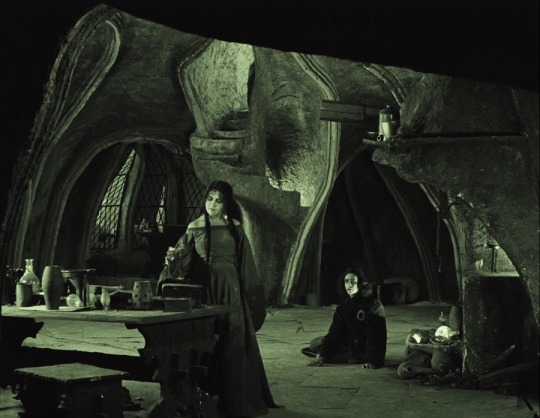
The Golem is an obvious ancestor of Frankenstein's monster, and his misadventure is startlingly similar to that of the better-known creature. Paul Wegener's expressive performance evokes the same range of anger, fear, and naive desire, and his moving interaction with an innocent child is abundantly familiar. In general, DER GOLEM is competitive with FRANKENSTEIN in its emotional complexity; even its villains are tragically human, driven at first by selfish compulsions, but faced with the consequences of their actions, they are sincerely penitent. Even the basics of antisemitism are addressed handily in the film, as the Jews' spartan existence in the ghetto, where their greatest treasures are their traditions and sense of community, flies in the face of the Emperor's accusation that they are avaricious and materialistic. (This coming down from a man bedecked in finery sitting on a gleaming throne, naturally)
The principle gift of DER GOLEM is its advanced aesthetics, owing to the fine work of master cinematographer Karl Freund and architect Hans Poelzig. But the film is bigger than its contributions to film history, telling a sensitive tale that is still surprising in its depth and thoughtfulness. I was glad to see there are new blu ray releases of the film from the last few years, and I'm excited to get my hands on one.

#blogtober#blogtober 2022#golemania#the golem: how he came into the world#der golem: wie er in die Welt kam#paul wegener#carl boese#karl freund#henrik galeen#gustav myer#Albert Steinrück#Otto Gebühr#Ernst Deutsch#Lyda Salmonova#horror#folk horror#german expressionism#hans poelzig#supernatural#occult#esoterism#frankenstein#religion
8 notes
·
View notes
Text

grock - affiche originale - réalisé par carl boese 1931
9 notes
·
View notes
Photo


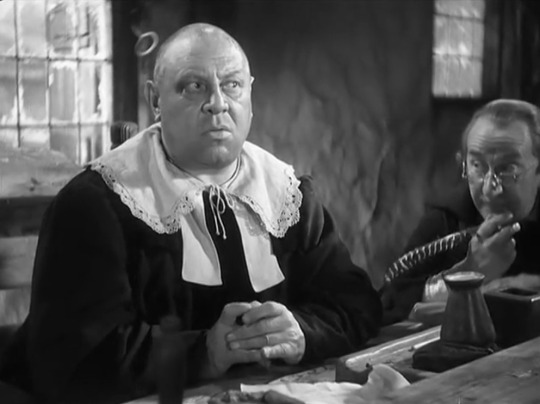
*
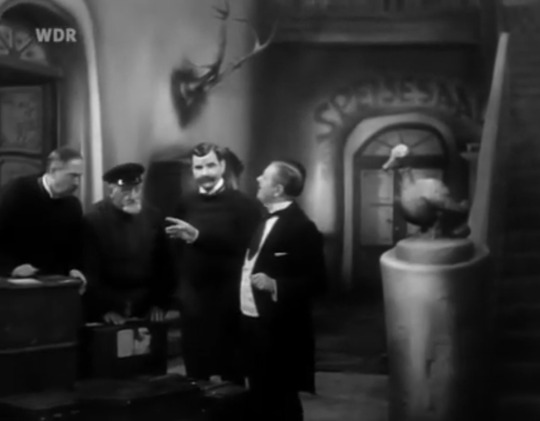
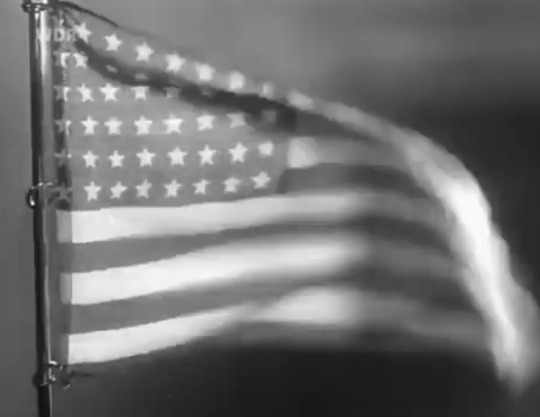





#der zerbrochene krug#gustav ucicky#emil jannings#heinrich von kleist#1937#man braucht kein geld#hans moser#heinz rühmann#carl boese#1932#hans im glück#herz aus glas
0 notes
Text

Vilma Banky's first film appearance was in the now lost film, 𝑰𝒎 𝑳𝒆𝒕𝒛𝒕𝒆𝒏 𝑨𝒖𝒈𝒆𝒏𝒃𝒍𝒊𝒄𝒌 (𝑰𝒏 𝒕𝒉𝒆 𝒍𝒂𝒔𝒕 𝑴𝒐𝒎𝒆𝒏𝒕), directed by Carl Boese in Germany in 1919.
26 notes
·
View notes
Text


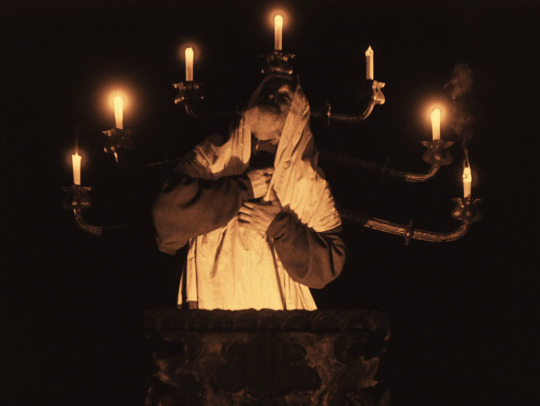


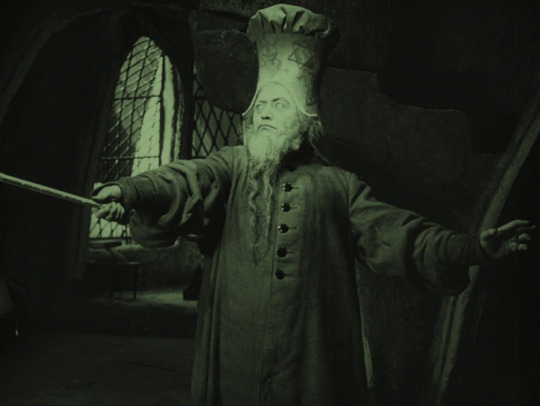
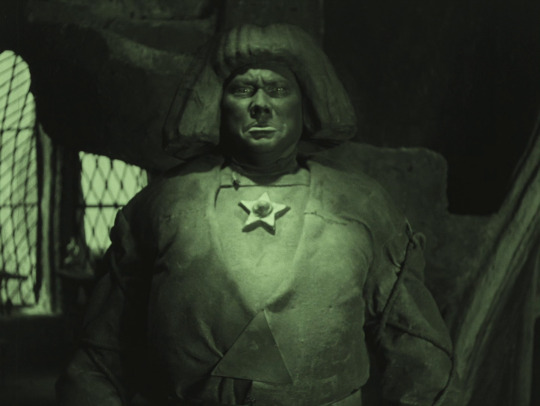


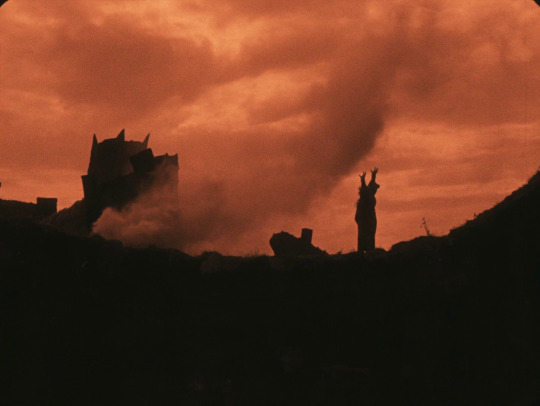
Der Golem - Paul Wegener & Carl Boese - 1920 - Germany
29 notes
·
View notes
Text
I’m compiling a list of films to help educate folks in this TTRPG group I’m in about themes in Jewish horror and folk stories before the release of “Beyond the Pale” next year and these are my entries so far.
I know a handful of them really aren’t that good, but I think it’s a really decent starting lineup for coming to know the trope space and culture.
The Golem: How He Came into the World (1920, dir. Paul Wegener & Carl Boese)
The Dybbuk (1937, dir. Michał Waszyński)
A Serious Man (2009, dir. Joel and Ethan Coen)
The Golem (2018, dir. Doran and Yoav Paz)
The Vigil (2019, dir. Keith Thomas)
Attachment (2022, dir. Gabriel Bier Gislason)
The Offering (2022/3, dir. Oliver Park)
12 notes
·
View notes
Text
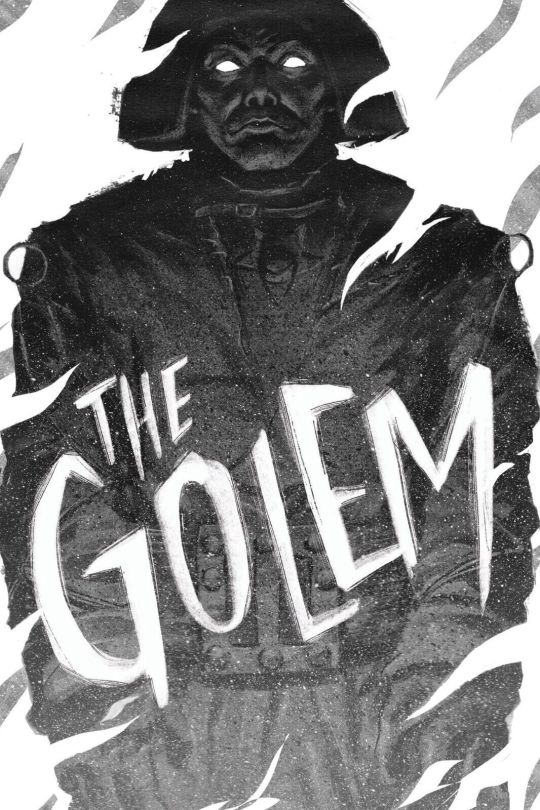
Der Golem, wie er in die Welt kam (1920)
AKA The Golem: How He Came into the World
#der golem wie er in die welt kam#the golem: how he came into the world#the golem#paul wegener#albert steinrück#lyda salmonova#1920s horror#1920s movies#1920#carl boese#classic horror#silent film#horror movie poster
85 notes
·
View notes
Photo



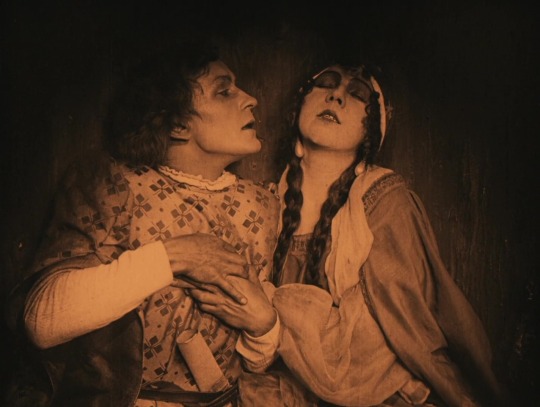

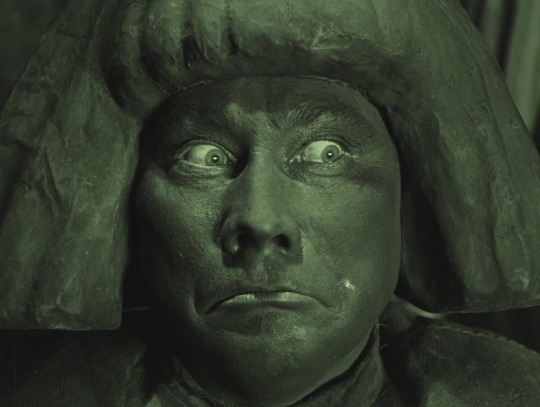
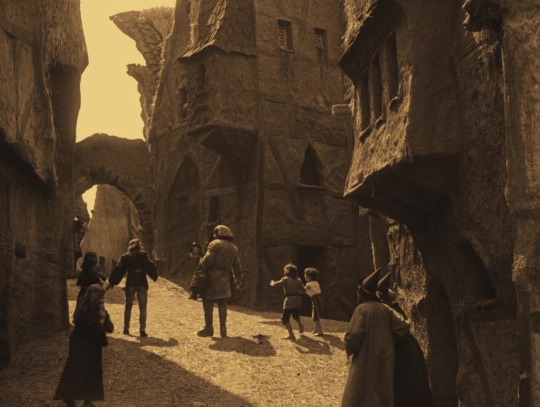
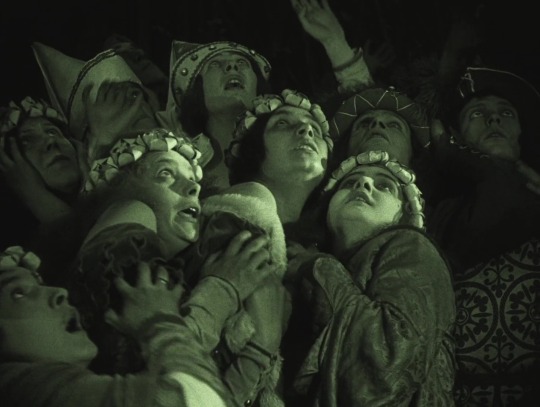
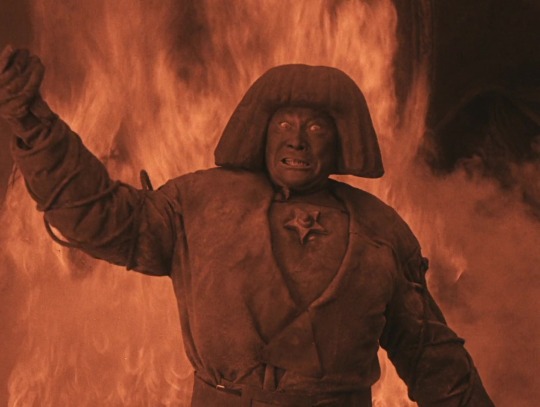
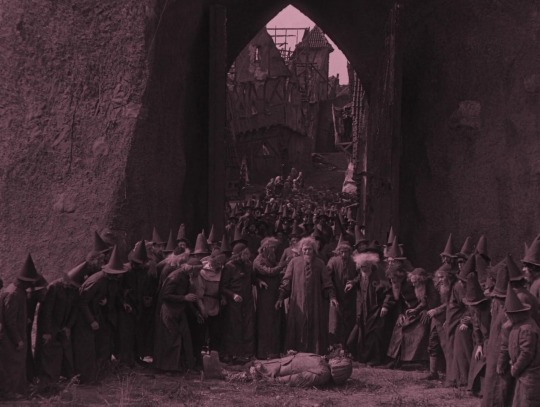
The Golem / Der Golem, wie er in die Welt kam (1920, Paul Wegener, Carl Boese)
Also known as: The Golem: How He Came Into the World
10/29/22
#The Golem#Der Golem wie er in die Welt kam#The Golem: How He Came Into the World#German expressionism#20s#silent#German#Paul Wegener#Albert Steinruck#Ernst Deutsch#Lyda Salmonova#horror#fantasy#16th Century#Prague#golem#Jewish#antisemitism#Bohemia#pogrom#monsters#reanimation#black magic#astrology#rabbis#expressionistic#magic#tinted
29 notes
·
View notes
Note
the 1920s and 1990s for the movie ask game
1920's:
1920: Der Golem, wie er in der Welt kam dir. Paul Wegener & Carl Boese
1921: The Goat dir. Buster Keaton
1922: Nosferatu dir. F.W Murnau
1923: no movie I'd call a "favourite"
1924: Die Nibelungen dir. Fritz Lang!! Not gonna choose between Siegfried and Kriemhild's Revenge they're one epic movie to ME
1925: again, no "fav"
1926: The General dir. Buster Keaton
1927: Metropolis dir. Fritz Lang
1928: The Passion of Joan of Arc dir. Carl Theodor Dreyer
1929: no "fav"
1990's:
1990: Jacob's Ladder dir. Adrian Lyne
1991: Point Break dir. Katheryn Bigelow
1992: Twin Peaks: Fire Walk With Me dir. David Lynch
1993: Carlito's Way dir. Brian De Palma
1994: The Shawshank Redemption dir. Frank Darabont
1995: Before Sunrise dir. Richard Linklater
1996: The Birdcage dir. Mike Nichols
1997: Titanic dir. James Cameron
1998: The Thin Red Line dir. Terrence Malick
1999: Eyes Wide Shut dir. Stanley Kubrick
4 notes
·
View notes
Text
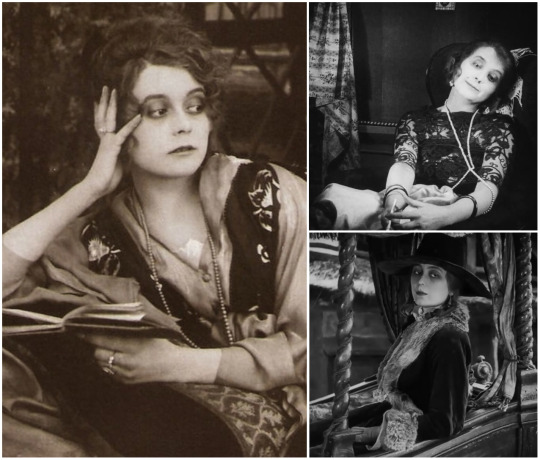
Herzlichen Glückwunsch zum Geburtstag, Gertrude Welcker! ❤️
(July 16, 1896 – August 1, 1988)
Gertrude Welcker was a stage and silent film actress; her film career was short lived, lasting from 1917 to 1925. The role she’s best known as, the alluring and enigmatic Countess Dusy Told of Fritz Lang’s 1922 epic crime thriller masterpiece, Dr. Mabuse, the Gambler.
Below is a summary of her life and career, with the people she had collaborated with as an actress.
She was born in Dresden, Saxony, Germany on July 16, 1896. Her younger brother Herbert was born in 1898. Gertrude’s father worked as editor-in-chief and general manager of the Posener Tageblatt, he died in 1909.
During the First World War, she visited Max Reinhardt’s acting school in Berlin. In 1915-16, she had starred in productions at the Albert Theatre in her hometown. During the years of 1916-19, Welcker performed at Deutsches, Kammerspiele, and Volksbühne theatres. Her stage roles include portraying a prostitute in August Strindberg’s Meister Olaf, Lesbia in Friedrich Hebbel's Gyges and His Ring, Recha in Gotthold Ephraim Lessing’s Nathan the Wise, Sister Martha in Gerhart Hauptmann's The Ascension of Little Hannele, and Desdemona and Jessica in William Shakespeare’s Othello and Merchant of Venice respectively.
Her film debut in 1917 was in Felix Basch’s Eine Nacht in der Stahlkammer as Jane Kendall, starring Harry Liedtke as her husband. Her next film was as an angel in Hans Trutz in the Land of Plenty, starring and directed by her stage collaborator Paul Wegener. The film also featured film director Ernst Lubitsch who portrayed Satan.
In 1918, she was in Lupu Pick’s Der Weltspielgel with Bernd Aldor and Reinhold Schünzel. She also starred in Viggo Larsen's The Adventure of a Ball Night with Paul Bildt and Paul Biensfeldt.
Welcker was also in Carl Froelich’s Der Tänzer with Walter Janssen.
She was the lead in the low-budget films, Die Geisha und der Samurai in 1919 and Eine Frau mit Vergangenheit in 1920.
Gertrude Welcker acted in films alongside Conrad Veidt, but those films are sadly considered lost. They portrayed siblings in F.W. Murnau’s Evening – Night – Morning and in Carl Boese’s Nocturne of Love, with Veidt as Frederic Chopin. (I, for one, would’ve loved for her to have been in a film as one of his leading ladies!)
In Hans Werckmeister’s 1920 sci-fi film, Algol: Tragedy of Power, she portrayed Leonore Nissen opposite Emil Jannings. It also starred Hanna Ralph, Hans Adalbert Schlettow (whom Welcker would appear with in Part II of Dr. Mabuse), and John Gottowt. The sets of the film were designed by The Cabinet of Dr. Caligari’s Walter Reimann.
She also appeared in Richard Oswald’s Lady Hamilton in 1921 as Arabella Kelly, in her first scene she is seen with Theodor Loos.
In 1922, Welcker portrayed her most infamous role as Countess Told in Dr. Mabuse, the Gambler starring Rudolf Klein-Rogge, with Aud Egede-Nissen, Alfred Abel, and Bernhard Goetzke. Also, in that same year - Welcker was in Carl Froelich’s Luise Millerin, an adaptation of Friedrich Schiller's Intrigue and Love as Lady Emilie Milford, another of her noteworthy roles. Previously, she was in a stage production portraying the role of Lady Milford's maid, Sophie. The film's all-star cast featured Lil Dagover as the title character, Paul Hartmann, Walter Janssen, Friedrich Kühne, Fritz Kortner, Werner Krauss, and Reinhold Schünzel.
She portrayed the villainess Gesine von Orlamünde of Arthur von Gerlach’s 1925 period drama film, Chronicles of the Grey House. It stars Lil Dagover, Paul Hartmann, Rudolf Forster, and Rudolf Rittner. Thea von Harbou was the film’s screenwriter with music composed by Gottfried Huppertz.
Her final film role was in Goetz von Berlichingen of the Iron Hand as Adelheid von Walldorf. She continued to act on stage until 1930. She has a total of 64 film credits to her name.
Around July 1930, Welcker married the Swedish painter Otto Gustaf Carlsund. She met him while on a trip to Paris. Their marriage lasted until August of 1937 and had no children. Before WWII broke out, she worked as an editor for UFA and by 1941, was active for the Red Cross. Some time before the war's end, she managed to leave for Sweden, and lived the rest of her life there.
It’s a great loss that so many of the films Gertrude Welcker did are considered lost and that her career as a film actress was as short as it was. Certainly, that many of those lost films showcased her great versatility. Gertude Welcker carried a remarkable set of talent, grace, beauty, charisma, and wit and is one of my most favorite actresses of the silent era I love.
Her filmography can be viewed here and here.
#gertrude welcker#1910s#1920s#german actresses#silent era#silent film stars#birthday remembrance#botd#vintage#she's a great actress#and I absolutely ADORE her <333#I was captivated by her ever since I first watched Dr. Mabuse#dr. mabuse the gambler#countess dusy told#happy birthday!#my post
2 notes
·
View notes
Photo

Der Golem [The Golem: How He Came into the World] (1920)
Hans Poelzig — Set Design
Directed by Paul Wegener & Carl Boese
3 notes
·
View notes